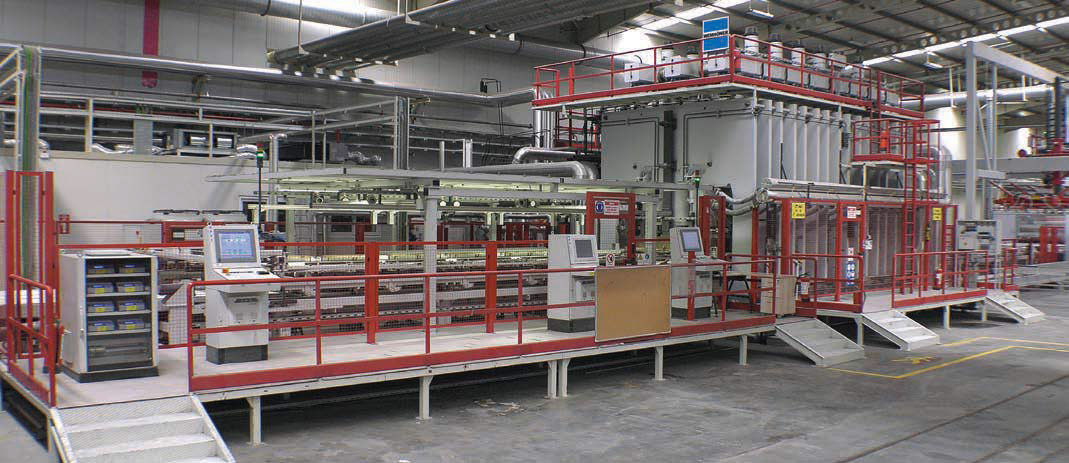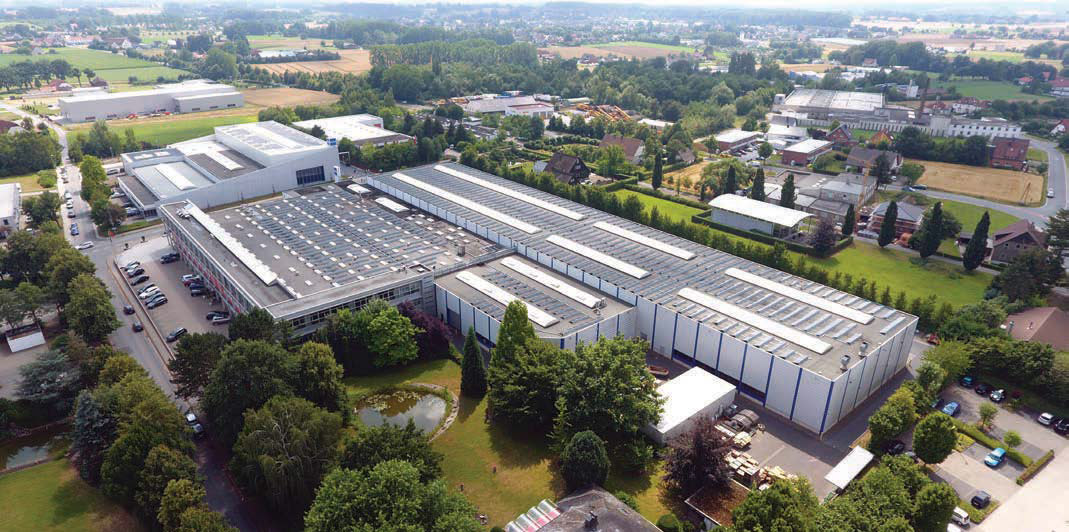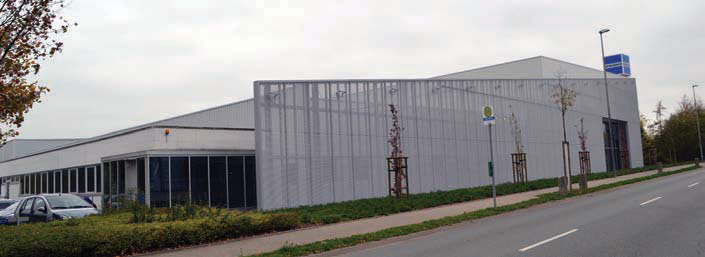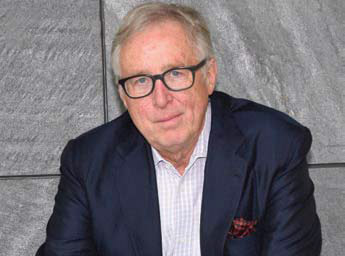Pressing on to 100
21 December 2018As it approaches its centenary, Wemhöner Surface Technologies continues to grow and currently has a full order book for its factories in Germany and China. Mike Botting visited chief executive Heiner Wemhöner at his Herford HQ
Heiner Wemhöner can look back over the years with some pride to his blacksmith grandfather’s founding of the Wemhöner company back in 1925.
The company has come a long way since then as a specialist in hydraulic and membrane press manufacture, aided by the growth of the furniture industry in the East Westphalia region, where the company is based, since the late-1940s.
Today, much of that furniture manufacturing has gone, but the region is still home to the biggest kitchen furniture manufacturers in Germany.
Not that the local market has the importance to the Wemhöner company that it once did. It is now a truly global player, with a thriving factory in China. More of that later.
The company started out in short-cycle (SCP) pressing, for which it is still wellknown – and it is still the biggest player in that market. However, the furniture industry moved on some time ago from just short-cycle pressing for its decorative surfaces and Wemhöner moved with it, being one of the first companies to introduce membrane pressing.
Twelve years ago, to reflect this change in emphasis, Heiner Wemhöner, chief executive of the family firm, altered the name of the business to Wemhöner Surface Technologies.
“We have many orders at the moment,” said Mr Wemhöner. “In fact our lead times are a lot longer than I would like. We are used to a seven-year economic cycle, but now it is more like eight to nine years.
“However, I think we may be approaching the end of the current cycle. The global political situation is unstable and I am concerned that some people are beginning to think that peace is no longer the right way. Demand has slowed a little recently, but this is partly due to the long lead times.”
WemhönerSurface Technologies has two production bases: The headquarters in Herford; and Changzhou, China. Both are growing.
After a number of expansions at Herford, the company had outgrown its site, but fortunately, Heiner Wemhöner’s father had the foresight, in the 1980s, to buy a plot of land across the road from the existing factory. “I couldn’t understand why he did it at the time, but now I’m very glad that he did!” said Mr Wemhöner.
That plot of land and its existing buildings have been put to good use and a large extension added, comprising the R&D centre and production space. It will be operational, with €8m of new machinery, including a milling machine capable of milling the large press frames the company makes for embossed-in-register pressing, as well as sawing, drilling and CNC machines, by the end of 2018. The existing factory will then be dedicated to assembly.
The purpose-built Changzhou factory opened in July 2007.
“We have extended that factory twice since then, but a condition laid down by the local government of Changzhou was that we could only use 50% of the site for buildings. The rest had to be landscaped as part of its environmental improvement programme.
“Therefore we have bought a new site, not far away, where we are now allowed to use 70% of the land for buildings and we are building our second factory there. The local authorities have been very helpful and encouraging to us throughout. Completion of that factory is due in 2020. I strongly believe that China will remain the largest furniture manufacturer in the world for a while yet.
“Most of the big machinery companies [in our industry] have factories in China and it is still not too late for others to enter China,” said the chief executive.
“We had been doing very good business in China up to 2002, but then it stopped. We had to decide at that point whether to give up on the Chinese business, or start producing our machines in China. Building the Changzhou factory was the best business decision I’ve ever made.”
Thirty percent of Changzhou’s production is exported, mainly to South East Asia and India.
“Changzhou’s production stands completely alone,” said Mr Wemhöner. “We don’t mix production from Germany and China. We have good market support in China, selling 10-15 short-cycle presses per year, and that is a lot.”
However, Mr Wemhöner said that the main business for the Changzhou factory is in membrane presses for the furniture industry; few panel manufacturers add value to their raw boards, limiting the market for short-cycle presses. Wemhöner Changzhou produces about 60 membrane presses a year.
“We hold an annual symposium in China and that has helped us a lot to bring customers to our company so they can see that our products are made in China, but to German quality standards.
“Interzum Guanghzhou is also the most important show for us after Ligna and we also exhibit at Lesdrevmash in Moscow, IWF in Atlanta (through Stiles Machinery) and WMF in Shanghai."
The Herford factory produces about 10 membrane presses and 20 short-cycle presses per year.
“These are much bigger and much more complex machines than we make in China. One of these SCPs sells for over €10m and we are currently negotiating for one even higher than this,” said Mr Wemhöner.
But surfacing panels is not the only thing Wemhöner can do with its presses: It has also just completed the supply of a contract for a lightweight board pressing line with robotic handling.
“Everything we make is custom-made. Our customers may make the same things, but each makes them in different ways. This is also another advantage for the China factory – it is closer to the customers, for direct contact.”
Changzhou turns over €30m (and growing) and currently employs 180 and Herford €100m in 2018, with €110m expected for 2019. Herford employs around 320 people.
Wemhöner is not just about pressing technologies: It also makes lacquering lines and has recently installed one in a factory in Russia, although this is not a main focus for the company, said Mr Wemhöner.
“What we are working strongly on now is digital printing. We launched direct printing eight years ago at Ligna and we have sold quite a few lines. But digital printing has the big future. The technology is not brand new, but is still not fully developed.
“It is particularly important for smaller production runs. The market is moving towards special requirements of the customer, rather like the automotive industry.”
The massive upswing in vinyl flooring sales has affected the laminate flooring market badly, but Mr Wemhöner said his company is still supplying laminate flooring lines, embossed-in-register (EIR), although the double-sided EIR panels for furniture are in more demand.
Wemhöner is represented in North America by Stiles Machinery and in South America by Inserco. Both companies have long experience with Wemhöner and its surfacing technologies.
For the future, Mr Wemhöner expected the Chinese market to be a little quieter, while the order book in Germany is already out to 2020, due to the long lead times.
“As I said, I believe digital printing is the future, but it is very important to work to the future in all our products, in order to keep ahead in the market,” said Mr Wemhöner.



